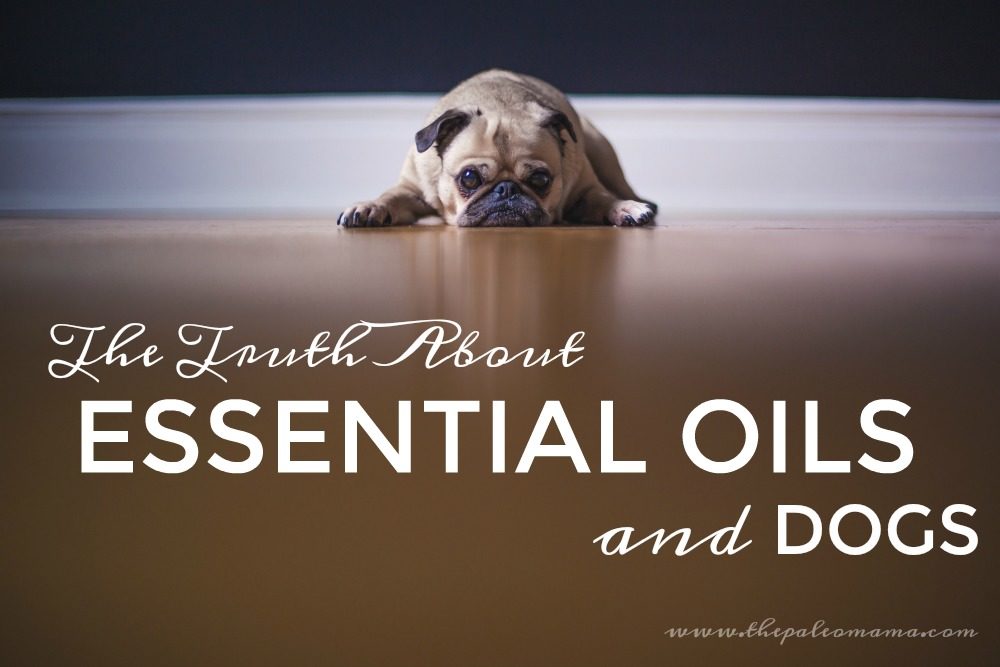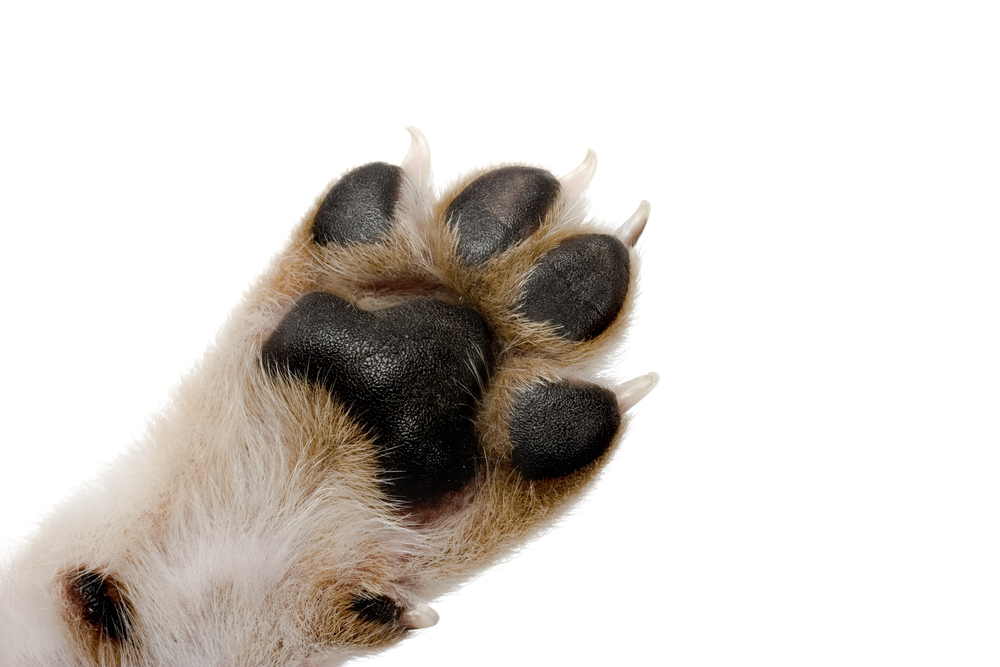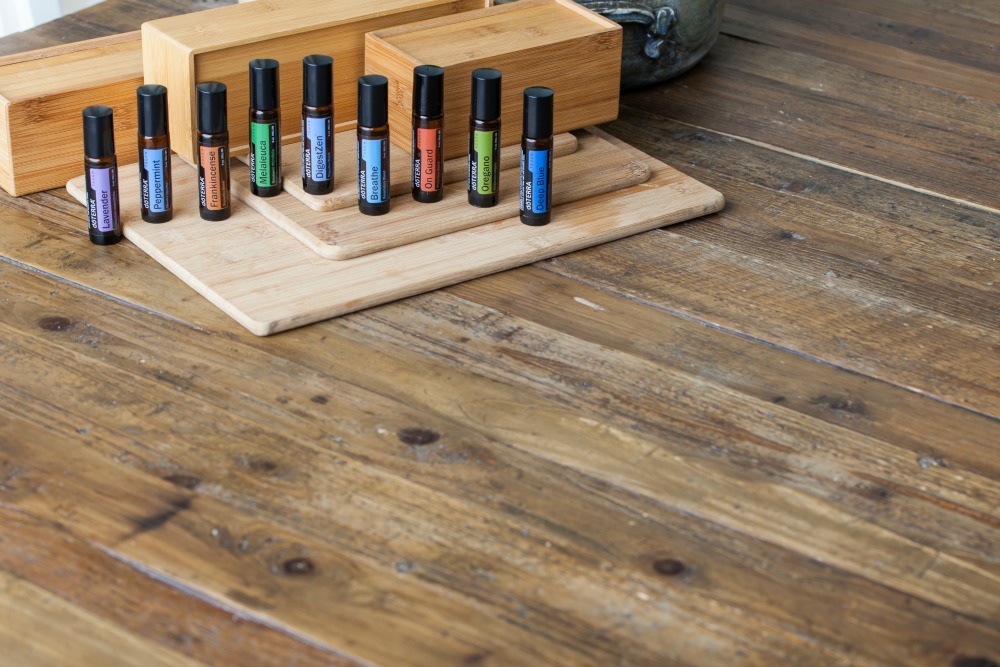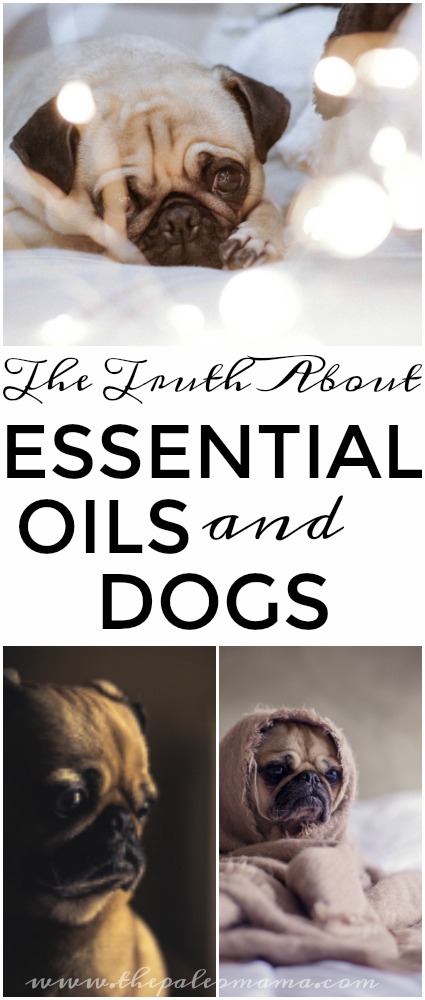
After finishing my recent post on essential oils and cats, there was a bit of an uproar in the canine community: “Howl about me? Yip, yip, howl can we use oils?” So this post on essential oils and dogs is just for you and your canine companions. We love being able to support our pugs using essential oils and you should too! There has been just as much confusion and polarizing information online about the use of essential oils and dogs —perhaps more. So it’s time to take a closer look at verifiable information related to the use of essential oils with or around some of our best friends!
Essential Oils and Dogs
Just as cats are unique, and must be cared for in ways unique to their makeup, so too are dogs. Not only are they unique as a species, but there are many different sizes of dogs, so each dog must be cared for uniquely. Essential oils can safely be used with dogs, if you follow the specific guidelines for safe usage. So let’s take a look at some guidelines for safe usage.
Use ONLY pure essential oils.
Not all essential oils are created equally! Online sites, including Amazon, are loaded with fake or watered-down or polluted essential oils. High-quality essential oils can greatly benefit your pet. Because essential oils are lipid soluble distilled from plants, they can be absorbed into cells through the cell membrane. When choosing an essential oil to use with your dog, first carefully consider the quality of the essential oil.
- Has it been third party tested?
- Is it a pharmaceutical grade EO that is safe to use topically or internally?
- Have you consulted with your veterinarian to be sure there are no underlying reasons why it might be unsafe to use essential oils with your dog?
- Never use aromatherapy or perfume grade essential oils on with your dog. Use only the therapeutic grade essential oils.
I highly recommend dōTERRA essential oils because they have more stringent testing and purity/quality checks that any other company. But even dōTERRA oils must be purchased through a Wellness Advocate (not amazon) to be sure you are getting the genuine oils. Here’s my unbiased tips to look for when buying essential oils.

Use the recommended dosage for your specific dog.
Dogs cannot metabolize essential oils as quickly as humans, so the essential oils should always be diluted before using. Remember, that in general the smaller the dog, the more you want to dilute the essential oil with a carrier oil. A suggested dilution for a mid-sized dog would be to use 3-5 drops and dilute it 80-90 percent in a carrier oil.
Here are some tips to keep in mind:
- Dogs are more sensitive to essential oils than humans are. Essential oils should always be used diluted, even when just inhaling. This is important to remember, as we humans don’t dilute when inhaling directly out of the bottle. Water diffusion is an excellent way to use essential oils through inhalation with your pups.
- Most issues that dogs have can be addressed with the inhalation of diluted essential oils.
- Only use essential oils with your dog when needed to address a concern—not to “prevent” a health issue. An example is to have them inhale a digestive essential oil after they eat, when they don’t have any digestive issues. This is not recommended.
- Do not add essential oils to your dog’s food or drinking water for no reason. See internal application method below for more details on this.
- Avoid using essential oils with puppies under 10 weeks of age—use hydrosols instead.
- Avoid the eyes, nose, and genital areas.

Types of Application for Dogs
The most common ways to use essential oils with your dog is: topically, aromatically, and internally. Use extreme caution when you begin. Just as you slowly introduce new food to your dog, so too introduce essential oils slowly. Start with a small amount, and watch your dog’s behavior. If there is no negative response, but no visible therapeutic effect, you can slowly increase the frequency of application. Each dog has a unique body chemistry, and can tolerate essential oils to a different extent.
Aromatic application
Water diffusion is the recommended aromatic application. Start with 1-5 drops of oil in your diffuser. Monitor your pet’s behavior during the diffusion and always leave a door open in the room you are diffusing so your dog can leave the room if he wants to.
Topical application
In most instances, the recommended method for applying essential oils to your dog is topical application. Start with diluted oils, and add more if needed. Here are some tips for applying:
- Rub along the spine—this is the most common and best tolerated application. Add some of your carrier oil to the palm of your hand, and then add 1-2 drops of your essential oil. Then rub your pup along his/her spine, as normal.
- Ear tipping—apply to the tips of your pet’s ears. Avoid this method with long-eared dogs because they may shake their head and get the oil in their eyes accidentally.
- Apply to the paws—this is not always well tolerated in small dogs. Be sure to get it on the skin between the paw pads, but be sure to dilute the oils because this is a fairly sensitive area.
- Water misting—this is helpful for covering a larger area, such as when you may be misting with a homemade flea solution using essential oils.

Internal application
Exercise caution when using this method. Be sure your dog has no underlying medical condition that might cause problems with internal application of essential oils. If you and your vet feel it is safe to use internal application, a recommended dosage is 1 drop in 2 cups of drinking water or 1 drop mixed with some fish oil and drizzled on wet dog food. If using in food, use in wet food only. Remember that because your dog grooms frequently, in most cases topical application also means internal application. For that reason always use diluted essential oils.
What Essential Oils Are Best?
Dr. Janet Roark has given us a list of her favorite top ten essential oils for dogs. These are:
- Frankincense: Supports healthy cellular function, rejuvenates skin, relaxation, balances mood, soothing
- Lavender: calming and relaxing qualities, soothes occasional skin irritations, eases feelings of tension, promotes restful sleep, reduces anxious feelings
- Helichrysum: promotes a healthy metabolism, promotes vitality and energy, soothing to skin
- DigestZen Blend: great for road trips, promotes healthy digestion, soothes occasional stomach discomfort, promotes a healthy gastrointestinal tract, eases feelings of queasiness, helps reduce bloating, gas, and occasional indigestion
- OnGuard Blend: an effective alternative to synthetic options for immune support, supports the body’s natural antioxidant defenses, protects against seasonal and environmental threats, supports healthy respiratory function
- Balance Blend: promotes a whole-body sense of relaxation, evokes feelings of tranquility and balance, promotes restful sleep, eases anxious feelings, use on car rides to create a calm environment
- Myrrh: powerful cleansing properties, especially for the mouth and throat, soothing to the skin, promotes awareness and emotional balance and well-being, use when tension levels are high, maintains peaceful feelings
- Roman Chamomile: Has a calming effect on the skin, mind, and body, soothes the systems of the body, supports healthy immune system function, add to shampoo/ condition for a skin soothing bath, soothes the body and mind, blends well with lavender or the grounding blend, apply over heart for feelings of well-being, soothes anger and irritability, promotes peaceful rest
- Lemon: naturally cleanses the body and aids in digestion, supports healthy respiratory function, promotes positive mood, assists with seasonal respiratory discomfort, helpful at removing grease from skin and hair
- AromaTouch Blend: comforting and relaxing effects, lessens tension when applied topically by massage, soothing
There are many other essential oils that may be safe for your pet. Try letting your dog choose the essential oil. Animals like dogs and horses will use their sense of smell to choose plants to eat when they need them for medicinal purposes. Try offering them different oils to smell. Their sense of smell is so precise, you do not need to open the bottle. Most dogs will lick the air repeatedly, which is part of their process of smelling. A dog will turn away from the oil he does not want, and try to lick the bottle or stand close to the one he chooses.

Essential Oils that May Not Be Safe to Use
Some oils should be used with caution with dogs. Some, like tea tree oil, may be too strong. These include:
- Camphor
- Cinnamon
- Clove
- Melaleuca /Tea Tree
- Oregano
- Thyme
- Wintergreen
Other that, by and large, should usually be avoided include:
- Anise
- Clove
- Juniper
- Thyme
- Wintergreen
- Yarrow
How to Use Essential Oils on Your Dog
Essential oils enter the bloodstream quickly. The most important consideration is to use only pure, high-quality essential oils. It is fairly easy to spot signs of trouble in how your dog responds. Watch for loss of appetite and trouble urinating, your pet may exhibit running eyes, vomiting, excessive panting, rubbing face, muscle tremors, diarrhea, rashes and drooling.
There are several common things for which you can use an essential oil with your dog. Here are some of the more common uses:
- Allergies—it is recommended that you work with your vet to determine the source of the allergy, since addressing the root cause will help to prevent the itching. Recommended oils are frankincense, lemon, lavender, and peppermint.
- Ear Infections—cleaning the ears regularly with a natural ear cleaner is essential. Recommended oils are diluted frankincense, geranium, lavender and basil.
- Seizures—a recommended oil to use is frankincense.
- Transitions—use when bringing a puppy home, transitions between homes, or adding a new animal. Recommended oils: lavender and myrrh.
3 Recipes for Homemade Essential Oil Solutions for Your Dog
1. Soothing Muscle Aches
- 2-3 drops of Copaiba
- 3 drops of Lavender
- 1 tablespoon of carrier oil
Mix in a glass roller ball bottle, and rub the roller on the area, and then massage.
2. Flea and Tick Repellent Spray
- 1-2 drops of Lavender
- 1-2 drop Eucalyptus
- 1-2 drop of Geranium
- 1-2 drop Lemongrass
- 2 tablespoons of carrier oil
Add ingredients to 8-oz. glass bottle, fill with water, and shake well before using.
3. Calming Mist for Dogs
- 3-4 drops Rosemary
- 3-4 drops Roman Chamomile
- 3-4 drops Lavender
Add to an 8-oz. glass spray bottle, fill with water, and shake well before spraying. Try spraying the mist into your palms and massaging your dog’s neck, back and chest to help them relax.
Get Started
Essential oils have so many benefits for dogs, and can work wonders. Be sure you are offering your canine best friend this natural, beneficial option for addressing health and wellness concerns. Just be sure to do your research, and do not go essential oil crazy. I recommend that you begin by using an essential oil with your dog for about two weeks, and then give your dog a break for two to three weeks. Watch out for signs of problems and monitor your pet’s behavior. Most importantly, listen to your dog, and don’t force an essential oil on your pet. Always consult your vet if you experience symptoms or issues you cannot understand or resolve.

Resources
- Dr. Janet Roark, DVM, is a veterinarian with a specialty in Veterinary Aromatic Medicine. She has multiple resources available at: https://www.facebook.com/EODVM/, and online at: http://essentialoilvet.com/about/.
- Dr. Eric Zielinski (“Dr. Z”) is trained as an aromatherapist, public health researcher and chiropractor, and has become the #1 source for Biblical Health and non-branded essential oils education. He can be accessed at: https://drericz.com/essential-oils-for-dogs/.
- “DoTERRA Essential oils for dogs,” available at: https://healinginourhomes.com/essential-oils-for-dogs/.
- Nayana Morag has a specialty in Animal Aromatherapy, and has studied Ttouch, animal acupressure, 5 element theory, and Aromatic Energetics and Kinesiology. She has available an Animal PsychAromatica Online course, available at: https://www.essentialanimals.com/courses/introduction-essential-oils-horses-dogs-online-course/.
Sources
- https://www.facebook.com/notes/essential-oil-vet-janet-roark-dvm/dr-roarks-top-10-essential-oils-for-dogs/1795528864005945/.
- https://drericz.com/essential-oils-for-dogs/.
- https://www.sitstay.com/blogs/good-dog-blog/essential-oils-for-dogs.
Since dōTERRA doesn’t carry hydrosols, what company is recommended for them? There are so many to choose from and often times hard to find out their testing and quality. Thank you!
I’m not sure of a good company for them. Personally I just use essential oils diluted and diffused on my pets. You could add a drop to a spray bottle of water and use it in place of hydrosols.
I have a customer wanting something for her dogs cough, due to allergies and tracheal irritation. The dog takes, enalopril, theophylline, lasix and tamerol p. What would you recommend. I sell doTerra essential oils. Thanks Jo Winebrenner RN
I’m not a doctor and cannot answer those questions Jo. You need to talk to a holistic vet.
You mentioned that OnGuard can be used but it contains clove oil which later you mentioned should be used with caution. Is OnGuard ok because it’s a blend?
It should be used with caution because of the clove and cinnamon. Diffusing is totally fine and using on the dogs sparingly and heavily diluted.
Great information thanks
I’m curious about the use of OnGuard which has cinnamon and clove in it and yet you don’t recommend using cinnamon and clove with / for dogs. Is it because its in smaller quantities in the blend?
Cinnamon and clove on it’s own should be used with caution. It’s not on the NO list for dogs, just something to use sparingly…as in through diffusion.
My toy poodle has dental issues and prone to gum disease. I am thinking of putting a drop of Frankincense or two in a roughly 50 serving tube of toothpaste (actually I plan to empty it into glass container.) I use Doterra oils and am a consultant so quality and purity is there. I’d love to help my pet with this and would love some advise as this.